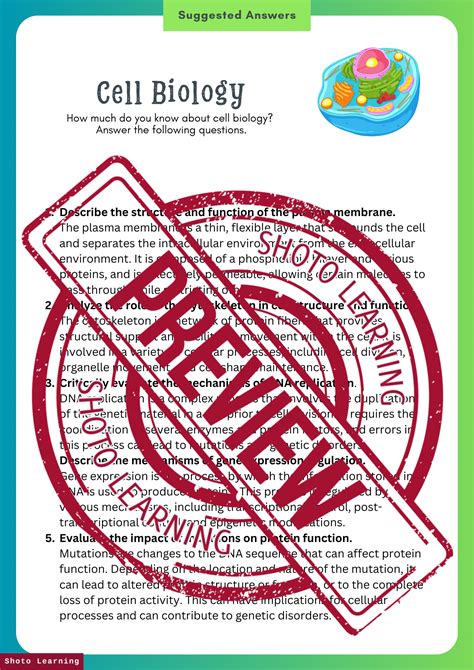Introduction

Biology is a vast and complex field of study that encompasses the study of life in all its forms. From the smallest microorganisms to the largest whales, biology seeks to understand the structure, function, and evolution of living organisms. In this article, we will explore some of the key concepts in biology and test your understanding with a series of true or false questions.
True or False Questions
- True or False: All living organisms are made up of cells.
- True or False: The nucleus is the control center of the cell.
- True or False: DNA is a single-stranded molecule.
- True or False: Mitosis is the process by which cells divide to create two identical daughter cells.
- True or False: Evolution is a gradual change in the characteristics of a population over time.
- True or False: Natural selection is the process by which organisms with favorable traits are more likely to survive and reproduce.
- True or False: The human genome contains approximately 10,000 genes.
- True or False: The brain is the largest organ in the human body.
- True or False: The heart is a muscle that pumps blood throughout the body.
- True or False: The lungs are responsible for gas exchange.
Answer Key
- True
- True
- False
- True
- True
- True
- False (approximately 20,000-25,000 genes)
- False (the skin is the largest organ)
- True
- True
Tables
Table 1: Cell Organelles and Functions
| Organelle | Function |
|---|---|
| Nucleus | Control center of the cell |
| Ribosomes | Protein synthesis |
| Mitochondria | Energy production |
| Endoplasmic reticulum | Protein and lipid synthesis |
| Golgi apparatus | Protein and lipid modification and packaging |
| Lysosomes | Cellular waste disposal |
Table 2: Key Terms in Evolution
| Term | Definition |
|---|---|
| Natural selection | The process by which organisms with favorable traits are more likely to survive and reproduce |
| Adaptation | A trait that increases an organism’s fitness in its environment |
| Extinction | The disappearance of a species from the Earth |
| Phylogenetic tree | A diagram that shows the evolutionary relationships between different species |
Table 3: Major Organs and Their Functions
| Organ | Function |
|---|---|
| Heart | Pumps blood throughout the body |
| Lungs | Gas exchange |
| Brain | Control center of the nervous system |
| Liver | Filters blood and produces bile |
| Kidneys | Filter blood and produce urine |
Table 4: Major Milestones in Biology
| Year | Event |
|---|---|
| 1665 | Robert Hooke discovers cells |
| 1859 | Charles Darwin publishes “On the Origin of Species” |
| 1953 | James Watson and Francis Crick discover the structure of DNA |
| 1981 | Kary Mullis invents the polymerase chain reaction (PCR) |
| 2003 | Human Genome Project is completed |
